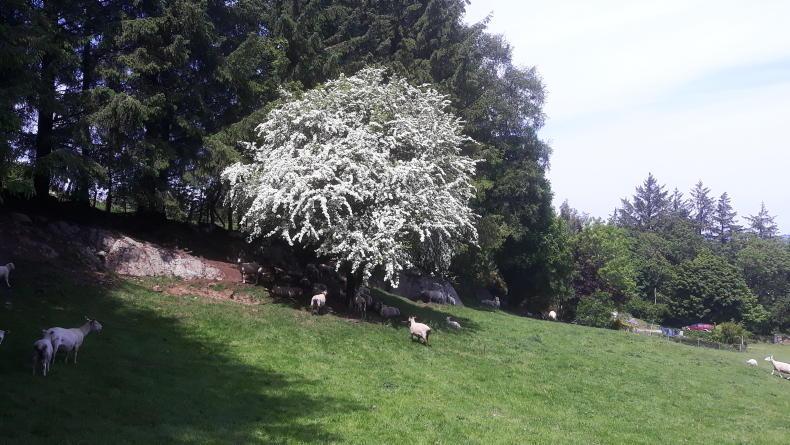There is nothing that can satisfy the senses more than the countryside bedecked with magnificent flowering hawthorn trees; or perhaps there is just one thing, and that is the taste of a spoonful of the honey from it.
Weather conditions were good as the sycamore nectar flow wound down, giving way to the flowering of the hawthorn. It was a pleasure to stand beneath a blooming hawthorn and both watch and listen to the bees busily working the flowers on the sunny side of the tree. Bees kept pace with the sun as it moved around the tree, spraying the leaves and blooms with light causing it to release its precious nectar in return for pollination.
No guarantees
There is no guarantee that hawthorn will produce quantities of nectar sufficient to get a crop of honey from it. My memories of beekeeping over many years would leave me counting on a few fingers the number of times that bees brought quantities of its nectar into the hives. A visit to the apiary in the cool of the evening, after bees have spent the day collecting nectar from hawthorn blooms, will leave the beekeeper under no illusion as to what nectar is being dried in the hive as they process it into honey. The airflow caused by bees fanning their wings to drive off moisture from the nectar results in the magnificent aroma of hawthorn honey, which can be detected at some distance from the hives.
Bees respond to nectar flows by increasing their numbers within the hive. This can lead to swarming. Beekeepers are at their busiest during this time checking each hive and making adjustments to avoid losing bees through swarming. These checks are almost finished for this year, relieving the beekeeper of this workload and giving the bees a settled period where they can do their pollination and collect nectar from blackberry and white clover.
Fine spell for queens
The fine spell was a blessing for beekeepers producing queens. Conditions were conducive to getting queens mated. In recent years queen mating had been poor, resulting in poor or incomplete mating. Problems arising from poorly or unmated queens resulted in failed colonies. An unmated queen will still lay eggs but they are not fertilised and so become males (drones) while fertilised eggs are females and are worker bees, which are the lifeblood of the colony. Having spare mated queens on standby is useful where issues arise and a queen must be replaced.
Nuclei which have been made during May and June will need monitoring for strength since they are expected to make it through the winter. Now is the time to plan for the heather by deciding which colonies will be suitable to bring to it. Experienced beekeepers will artificially strengthen colonies, such that the incoming nectar gets stored in the supers (supers are used for the storage of honey).
If I were a betting beekeeper, I might be inclined to say that we have had our rewards. It could well be that the rest of the summer may be unfriendly to bees and beekeepers.






 This is a subscriber-only article
This is a subscriber-only article










SHARING OPTIONS: